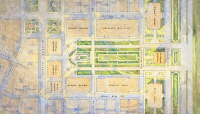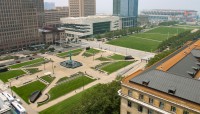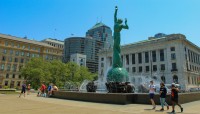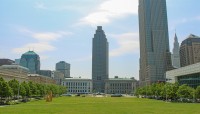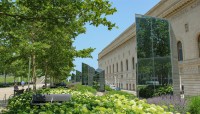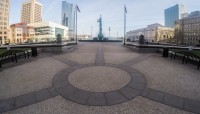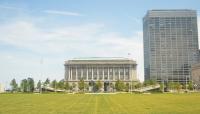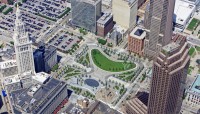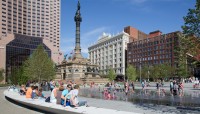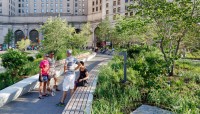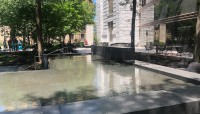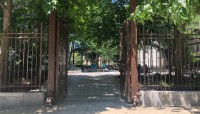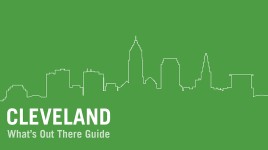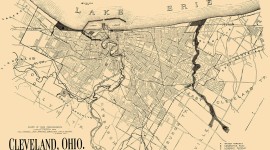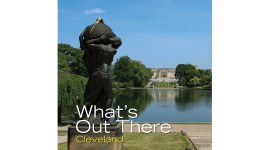Landscape Information
Supported by the American Institute of Architects and the Cleveland Chamber of Commerce, the City of Cleveland in 1902 established a Group Plan Commission tasked with creating a harmonious, centralized plan for the city’s downtown. Architects Daniel Burnham, John Carrère, and Arnold Brunner led the Commission and presented their plan in 1903. Inspired by the City Beautiful movement and Burnham’s previous experience planning the 1893 World’s Columbian Exposition in Chicago, the Commission recommended clearing 44 acres of land on which to lay out an axial plan with a wide, central, tripartite mall running south-north to the shore of Lake Erie, with a secondary east-west axis along the lakefront. Beaux-Arts civic buildings of uniform scale and style would surround the mall and anchor the terminating axial focal points.
Soon after, the city acquired land east of its historic Public Square, stretching between Superior Avenue and the lakefront, to realize the plan. Upon Burnham’s death in 1912, Frederick Law Olmsted, Jr., was appointed to the Commission and continued to advise on the implementation of the plan for the Mall through the 1930s. Approximately 500 feet wide and 1500 feet long, the Mall runs north from Superior Avenue and is intersected by the east-west axis of Lakeside Avenue at its north end. The symmetrical, nearly identical Post Office (now Federal Building, 1910) and Public Library (1925) buildings mark the southern boundary of the mall, while the County Courthouse (1911) and City Hall (1916) mark the northern end. The Public Auditorium (1922), Board of Education (1930) and County Administration Building (1957, demolished 2014) frame the mall’s east and west borders. A planned lakefront railway station at the mall’s north terminus was relocated to Public Square following objections from the U.S. Railway Administration.
In 2010, Mayor Frank Johnson commissioned a new Group Plan to oversee development of the city’s downtown core. A 2014 master plan by landscape architects Gustafson Guthrie Nichol (GGN) and LMN Architects, commissioned by LAND Studio, proposed restoring the connections between the lakefront, civic institutions, and public spaces established in the 1903 Group Plan.





